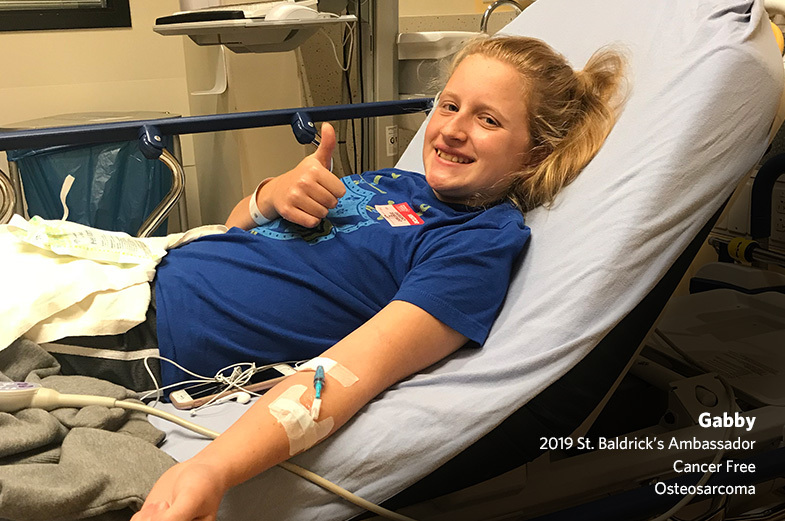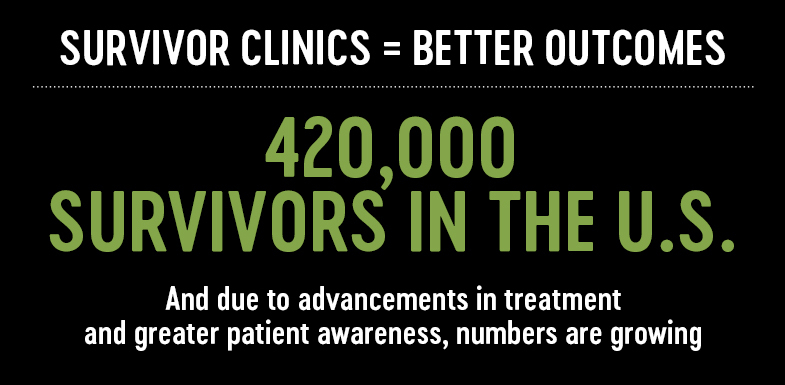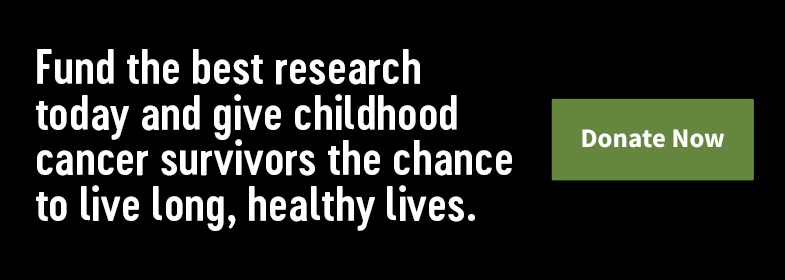Your Donations Help Find Cures and Improve Quality of Life for Survivors
St. Baldrick’s is dedicated to scouring the nation in a relentless pursuit to discover and unearth the most promising research. We fund the most innovative researchers so they may provide the most effective and ground-breaking treatments to every single childhood cancer. It’s this tenacity that ensures donors that they’re helping to propel advancements that will find cures for childhood cancers and develop less toxic treatments, giving survivors long and healthy lives. We find and fund the very best of the best. So put your money in the hands of the researchers who offer us all the very best chance to make a huge impact. Please donate today.

Research Funded by St. Baldrick’s: Specific to Survivorship
Donations are making a huge impact. Funding lifesaving research. Finding cures. Improving quality of life.
1. Research to find cures AND improve survivorship
Our mission is to fund the most promising research. For disease types where survival rates are already high, research focuses on decreasing toxicity without compromising cure rates. For other disease types, research to find cures while minimizing damage is vital, especially for brain tumors. Below are a few examples of research in this area:
- Radiation effectively treats pediatric brain tumors but can damage the brain causing swelling and long-term cognitive deficits. Research funded by St. Baldrick’s, Dr. Simone Sredni and colleagues has identified a new drug (MW151) that can be given orally to patients receiving radiation therapy to protect their brains against the cognitive decay caused by radiation. This has the potential to transform care and significantly improve the quality of life of young patients and their families.
- Children experience serious side-effects during and after cancer treatment and it’s hard to predict who experiences these side-effects. To understand these inconsistencies and minimize serious late effects St. Baldrick’s is funding Dr. Aman Wadhwa. Until now, chemotherapy dosage was based on height and weight, but Dr. Wadhwa and his team believe body composition (fat and muscle) plays an important role in how chemotherapy is distributed through the body. Using CT scans to determine body composition, they’re developing a way to customize the chemotherapy dose for each child to minimize serious side-effects but at the same time, maximize cure rates.

2. Research focused specifically on improving the health and quality of life of survivors
Children are more at risk of late effects because their bones, tissues and organs are rapidly growing during the time of their treatment. Studying the nature and scope of the impact of these treatments helps develop interventions that minimize late effects and improves quality of life. It also provides ways to improve the health and well-being of patients already impacted. Below are a few examples of research in this area:
- The cardiovascular system is often affected by cancer treatment and cardiovascular disease is the 2nd leading cause of death in childhood cancer survivors. Some anticancer drugs are harmful to the heart and may cause heart failure in survivors. High blood pressure increases the risk of heart failure in survivors, but no one knows how this happens. Funded by St. Baldrick’s, Dr. Beshay Zordoky believes anticancer drugs make the heart age faster leading to a worse response to increased blood pressure. He’s looking at a natural compound and a new group of drugs to prevent aging to see if they will protect hearts from anticancer drugs, making hearts better able to cope with high blood pressure.
- Many children undergoing treatment for retinoblastoma are treated with a drug that as a side-effect causes hearing loss. Understandably, this is especially devastating for those who also lose their eyesight to retinoblastoma. Dr. Robert Hayashi — who’s funded by St. Baldrick’s – along with others are studying the nature and scope of the impact of this treatment in order to develop interventions to give survivors a better quality of life. Dr. Hayakshi hopes to advance efforts to minimize the long-term hearing loss of these children as well as provide interventions to optimize the health and well-being of those patients already impacted by their therapy.

3. Research to help survivors/families get care and make choices about their care after cancer.
Fear that their cancer could return, or some other life-threatening health concern could befall them is part of a survivor’s daily life. One result of research to better understand the needs of cancer survivors has been the introduction of Survivorship Clinics. These clinics provide services that monitor cancer survivors and help them live well after treatment, including helping them manage physical and emotional risks. These clinics didn’t exist 15 years ago and were created in large part because of research. Below are a few examples of research in this area:
- Research shows parents want information about long-term side effects of treatment starting at diagnosis, but most parents don’t receive it. So, St. Baldrick’s Scholar Dr. Katie Greenzang is building a website to help parents understand the long-term effects of treatment choices. They’ll then determine if these tools help parents make better-informed decisions about treatment and whether it better prepares them for managing their children’s long-term care.
- There are 420,000 survivors of childhood cancer in the US and due to advancements in treatment, numbers are growing. A recent study found that by age 50, childhood cancer survivors have experienced, on average, 17 adverse effects, 3 to 5 of those being severe to life-threatening. Research is critical to improve their care. St. Baldrick’s Scholar Dr. Jonathan Fish is researching whether care in survivorship clinics improves patient awareness of treatments received and risks they face because of those treatments, as well as the ability of survivors to follow medical recommendations and referrals.

4. Research to learn more about survivorship itself
This research helps to determine the survival rates of children with various cancers and helps to identify what late effects impact their lives. It also provides a more comprehensive picture of the burden of childhood cancer globally. Below are a few examples of research in this area:
- St. Baldrick’s Scholar Dr. Nickhill Bhakta‘s work is looking beyond the measures of incidence and mortality more suited to adult cancers, to also include data on long-term effects experienced over many decades by childhood cancer survivors. This information will be key for global stakeholders and policymakers as they put together a plan to meet this challenge. He found that by the time survivors of childhood cancer are 50 years old, more than 99% have had a chronic health problem and 96% have severe or life-threatening conditions.
- Research found the biology of cancer in patients between the ages of 15 and 39 is different and increasingly indicates young adult patients with some cancers would benefit by being treated on what are traditionally pediatric therapies. Therefore St. Baldrick’s funded researcher Dr. Robert Vasquez is analyzing the factors that influence long-term outcomes on AYA’s (adolescents & young adults). The Ochsner Adolescent and Young Adult (AYA) Cancer and Survivor program and Survivorship Clinic is the first of its kind in the region. It ensures patients access to the best clinical trials for their cancer.
Funding for Research is at Risk
Great strides have been made in treating childhood cancers. In large part, this is because St. Baldrick’s has tirelessly worked to raise funds to ensure that lifesaving research and advancements came to fruition. We thank our volunteer and donor powered community – you are why we now have so many survivors to celebrate during Cancer Survivors Month.

The impact we’ve made is undeniable but without funding, survivorship itself is at risk. Join us in our fundraising efforts this month to help bridge the gap in fundraising due to the global crisis. As part of our 20th anniversary, a St. Baldrick’s founder Tim Kenny and his wife Sheila, have agreed to match donations in the month of June, up to $300,000. So please give generously. Also, encourage your friends and family to participate in St. Baldrick’s Survivorship Giving Day on June 30th. Even St. Baldrick’s 2020 Ambassador Micah will be doing his part with a virtual head-shaving event. Help us propel advancements. Put your money where it has the very best chance to make a huge impact in the lives of kids with cancer, survivors of childhood cancers and those yet to be diagnosed. Please donate to #DFYchildhoodCancers today.

Join us today and #DFYchildhoodCancers!
Read more on the St. Baldrick’s blog:

 SBF
Tweets »
SBF
Tweets »